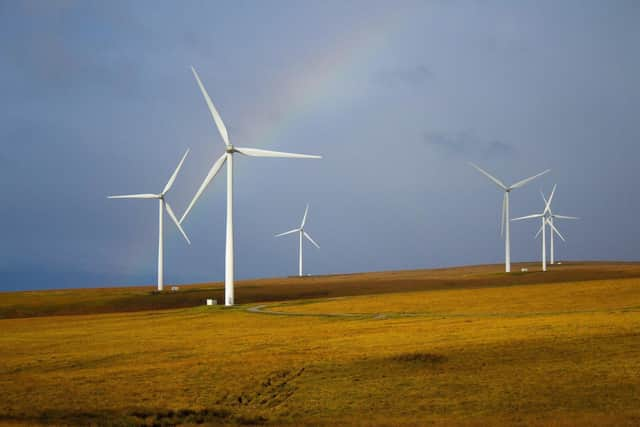Brian Monteith: How would the SNP and Green coalition avoid putting our lights out?
There will be hundreds of jet flights burning up hundreds of thousands of air miles of aviation fuel; images of the snake of limousines slinking their way from swanky hotels far away from the city’s deprivation is already percolating our newspaper pages; then there will be virtuous electric vehicles charged up by diesel generators (because there are insufficient charging points) belching out more pollution than had they simply used diesel cars already available. I could go on with examples of the hypocrisy of our leaders, suffice it to say the peak in pollution that COP26 will cause is only matched by the risk to Covid-19 transference that could bring its own spike in cases.
Given we know that the Chinese and Russian leaders will not be there and anyhow these events are stage-managed with the media statements prepared in advance why not simply do it all online? The idea that COP26 represents some democratic manifestation where ordinary people have any influence – is risible. We can only place our trust in these leaders, be they elected – or have just as likely taken power through the spilling of blood, or by the will of their God.
There are, however, local issues closer to home we ordinary earthlings living in Scotland can influence. One I consider of importance is how do we keep the lights on when the wind doesn’t blow? I am not being trite – our wind turbines are often becalmed (or switched off) and power has to be obtained from other sources.


For the wealthy, who can afford their own diesel generators to power up their homes, offices and cars (just as happens in many poorer countries I have worked in around the world) going without electricity is at worse an irritant easily overcome – but for the ordinary person it becomes hugely inconvenient, often dangerous and occasionally life-threatening.
To look at the existing arrangements in Scotland – and also consider what the challenges might therefore be were we to choose to abandon the United Kingdom – the campaign group Scotland Matters commissioned a report that I am pleased to now publish at ThinkScotland.org – and it truly conjures up a Halloween nightmare.
The report’s author, Paul Spare, an engineer of 30 years relevant experience, confirms the degree to which Scotland is not just self-sufficient in generating electric power at this time, but, thanks to the existence of the UK’s national Grid, is able to export excess power to the rest of the UK. Indeed thousands of wind turbines have been specifically built in Scotland and off its shores so the power they provide can be sent to areas around Britain. Scotland’s current contribution to the National Grid can be up to 12,500 MW of which 2,400 MW is nuclear power and 1500 MW is Gas generated. A variety of renewable sources can provide 8600 MW of which 7000 MW relies on wind turbines.
Average demand in Scotland is about 3,500 MW with a midwinter peak of 6,000 MW meaning there is capacity available for ‘export’ to England through interconnectors that can cope with 5,750 MW.
Such will the capacity grow to 15,000MW (of which wind power will be 12,000MW) that the current interconnectors from Scotland to England will need upgrading to take this extra power. It does not take a genius to understand that were Scotland to secede from the UK then other alternatives might be considered rather than buying power from a foreign country at a higher price than generating it in England or Wales. Or, alternatively, importing power from France, the Netherlands or Norway by using cheaper existing supply rather than investing billions for a new interconnector with Scotland.
The idea that an independent Scotland will be a major exporter of power is built on the fallacy that the National Grid being cut in two will be of no consequence.
There is a real danger that Scottish wind turbines could become stranded assets if the England and Wales grid is separated from Scotland’s.
There is however an even bigger issue and that is what happens on the days when Scotland does not generate enough power itself but must import power from the rest of the UK? Currently that is not a problem for the existing interconnectors can handle the load required – but by the time “independence” might take place Hunterston nuclear power station and Peterhead’s gas-powered generator should have closed. This will mean the power required from England would be too great for the existing interconnector and the lights would go out in many parts of Scotland.
The problem could be solved by the Scottish Government building a new interconnector (or two); it could be solved by building new nuclear power stations (or retaining gas or even coal powered generation on stand-by) – but thus far the problem is not even acknowledged, far less are there Plans A or B to choose from. The cost would of course be massive – running into the billions – and far harder to be borne by five million Scots than the 67 million Brits.
What we have then is the availability of secure electric power becomes added to currency, the fiscal deficit and national debt as a key issue the SNP and Greens do not have an answer for. We don’t need international politicians to turn our lights out when our own can manage fine themselves.
Brian Monteith is editor of ThinkScotland.org and previously served in the Scottish and European Parliaments for the Conservative and Brexit Parties respectively.